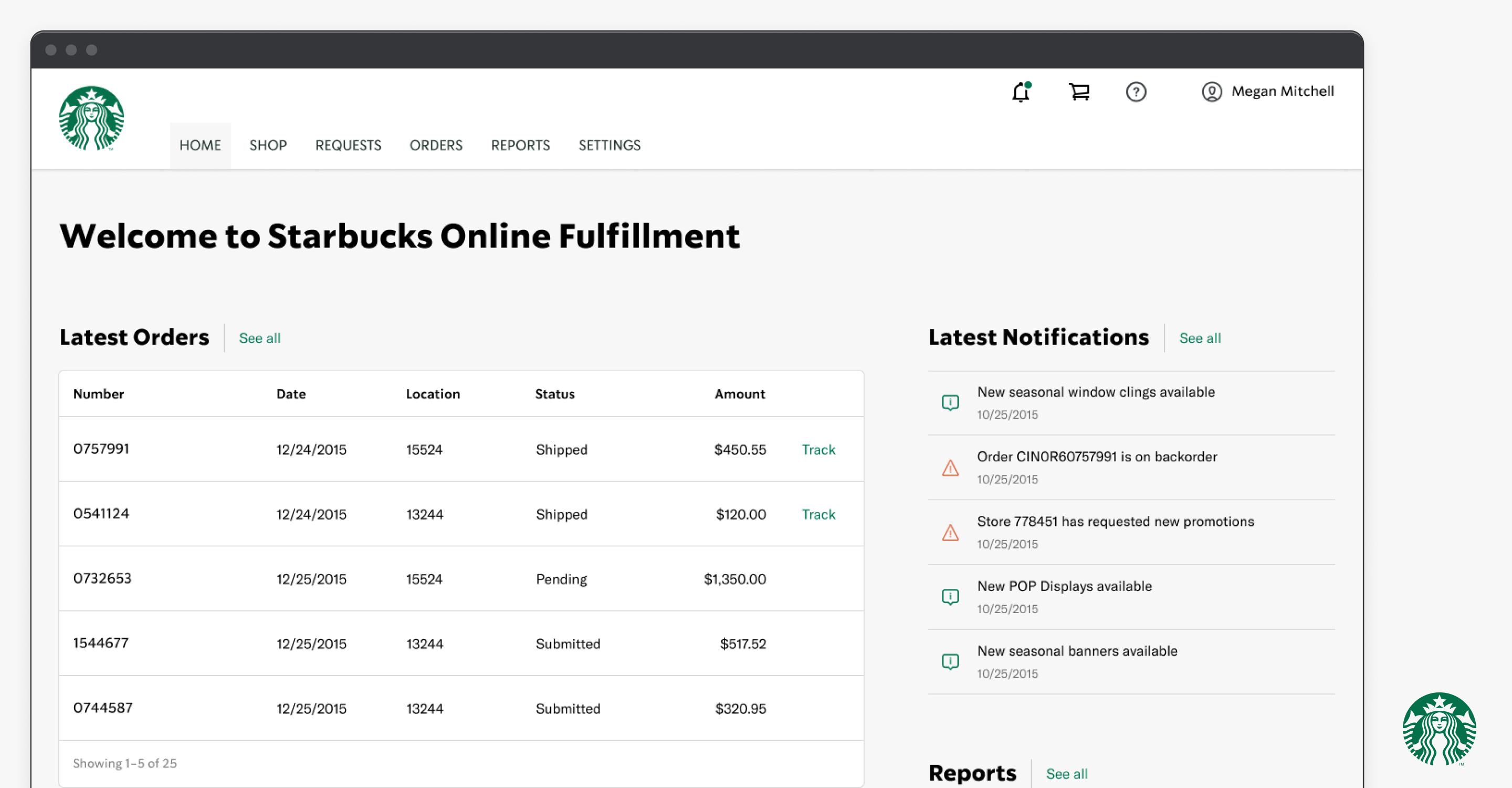Project Origin
The online system through which Starbucks ordered promotional and other in-store materials for their retail stores, known as Promonet, was outdated, offering a poor user experience that led to considerable wasted time and money. Store and district managers, buyers, and marketing teams had little insight into the status of store promotions, causing excessive amounts of back-and-forth communication among team members.
I was engaged by Starbucks to redesign this system, improving its ease of use and incorporating functionality that would make the processes of ordering and tracking promotional materials much more efficient. Additionally, I aimed to give its user interface a more modern appearance that better reflected Starbucks’ branding and the contemporary aesthetic of the time.
The Process
User Research
The redesign effort began with an assessment of the existing Promonet web application, which included a heuristic evaluation as well as user interviews designed to better understand the platform’s users and their pain points with the existing system.
The immediate outcome of the project’s research phase was a Functional Requirements Document that defined the needs of various user personas and the functionalities that would best address those needs.
Information Architecture
Low Fidelity Design
High Fidelity Design
With a low fidelity design validated by extensive user input, primarily in the form of usability testing, I was able to advance to the high fidelity design. Each screen presented only the most relevant information, promoting the functionality that best supported the tasks users needed to accomplish.
In Conclusion
Ready to make something awesome? Let’s talk!
If you have a product to design please don’t hesitate to reach out. I have helped some of the world’s best known brands achieve big successes and I would be delighted to do the same for yours.







